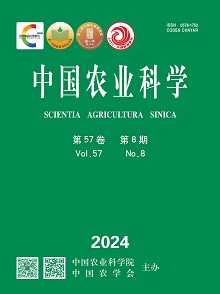【Objective】 Overgrazing and mowing of grassland in north China caused serious vegetation degradation and soil nutrient deficiency. The purpose of this study was to investigate the effects of nitrogen and phosphorus fertilizers on plant community diversity and productivity in the degraded grassland. 【Method】 A four-year nitrogen and phosphorus addition experiment was conducted with two kinds of fertilizers, including calcium superphosphate and ammonium nitrate, scheduled 2 nitrogen rates (0, and 10 g N·m-2·a-1) and 6 phosphorus rates (0, 2, 4, 6, 8 and 10 g P·m-2·a-1) with interaction between the both, a total of 12 treatments, and each treatment repeated 5 times. Fertilizers were applied when grassland was turning green in late May, and the community was investigated in the period of maximum biomass in the middle of August every year. In the process of research, the community productivity, species diversity and relative biomass of four functional groups were analyzed. 【Result】 From 2014 to 2017, it was found that the species richness decreased by year, and the average species of the control treatment (neither nitrogen nor phosphorus) was 20.2, 17.1, 14.7 and 15.2, respectively. Based on plant community α diversity index (richness and Simpson dominance index) , the study showed that nitrogen addition significantly decreased the species diversity of the community, but phosphorus addition and cumulative effects of phosphorus did not affect the species diversity of the community. There was a significant difference in diversity index among years, and the interaction between nitrogen and year had a significant effect on it. The aboveground net primary productivity (ANPP) of grassland community varied significantly among years, with the highest in 2014 and the lowest in 2015, the range was from 400 g·m -2 to 100 g·m-2, and which in dry years was significantly lower than that in normal precipitation years. Phosphorus addition had little effect on ANPP, while nitrogen addition significantly increased ANPP, and the effect of nitrogen and phosphorus addition together was greater than that of phosphorus alone. In the normal precipitation growing season, nitrogen was the main limiting factor of Hulunber meadow steppe. Nitrogen addition significantly affected the relative biomass of functional groups, while phosphorus addition had little effect on it, and there was a significant difference in the relative biomass of each functional group between years. Nitrogen addition alone significantly increased the relative biomass of the perennial rhizomatous grass (PR), but reduced the relative biomass of the perennial fobs (PF) and perennial bunch grass (PB). Phosphorus addition alone increased relative biomass of PB and perennial leguminous (LE), while had no effect on relative biomass of PR and PB. Combined addition of nitrogen and phosphorus significantly increased the relative biomass of PR, but significantly decreased the relative biomass of the other functional groups. In addition, the nitrogen and phosphorus combined addition partly reduced the plant community stability. 【Conclusion】 The differentiation of different functional types’ responses caused by nitrogen and phosphorus addition led to the changes of the original hierarchical level between different functional groups, especially nitrogen addition could cause a rapid increase in PR relative biomass, and thus led to the plant community structure developing towards the direction of increasing dominance of PR, and decreasing species diversity and community stability.











